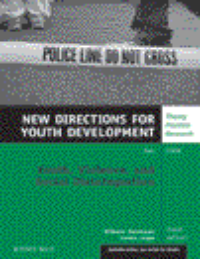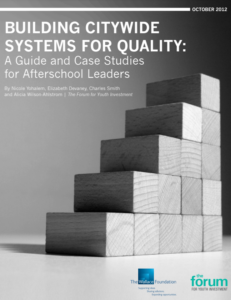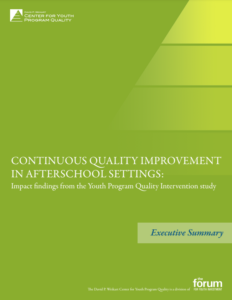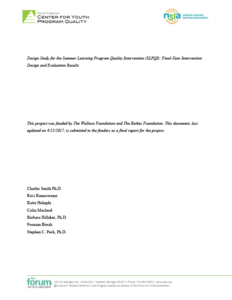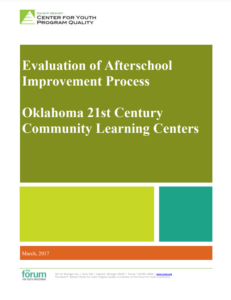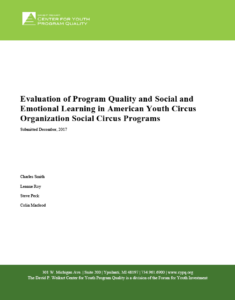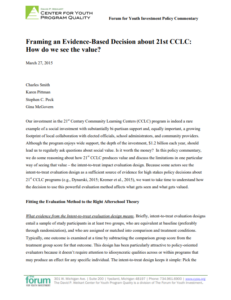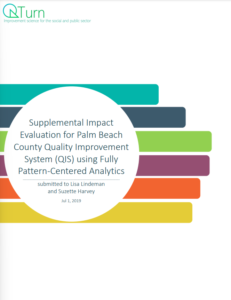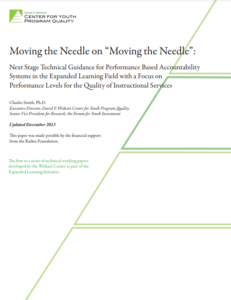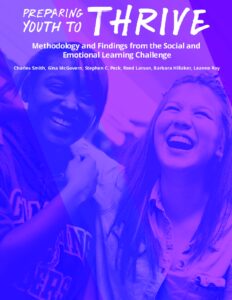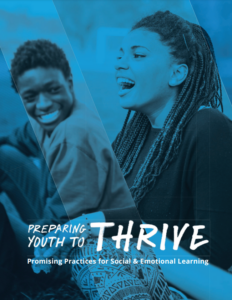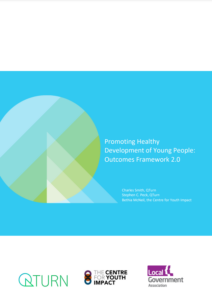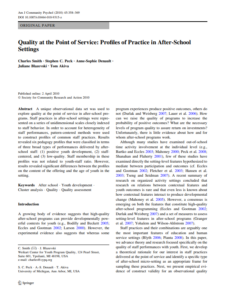Publications from 2010-2019
Back to Publications
This research article discusses efforts to define and improve the quality of afterschool services, highlighting areas of agreement and identifying leading-edge issues. We conclude that the afterschool field is especially well positioned to deliver high-quality services and demonstrate effectiveness at scale because a strong foundation has been built for continuous improvement of service quality.
This guide offers case studies that explain how cities and intermediaries can work with afterschool providers across a neighborhood, city, or region to build quality into the programs that are part of an afterschool system.
The David P. Weikart Center for Youth Program Quality conducted a three year intervention study to examine the Youth Program Quality Intervention (YPQI). The YPQI is a data-driven continuous improvement model for school and community-based sites serving youth during afterschool hours.
This paper describes implementation and outcomes for QIS in school-based summer learning programs in multiple cities.
This paper describes validity of QIS performance measures and longitudinal change over four years in Oklahoma 21st CCLC programs.
This report exemplifies use of the suite of SEL measures and benchmarks in the American Youth Circus Organizations network.
In this policy commentary, we do some reasoning about how 21st CCLC produces value and discuss the limitations in one particular way of seeing that value – the intent-to-treat impact evaluation design.
We sought to answer two specific questions about implementation and children’s SEL skill growth: What is the impact of QIS exposure on program quality (i.e., best practices, low staff turnover, great content), particularly for programs that have lower program quality at baseline? What is the impact of exposure to high program quality on student SEL skills?
This paper describes a generic quality-outcomes design (Q-O design) that meets the need for performance measurement methodology for concurrent and integrated impact evaluation and continuous improvement in the same organization; that is, measure once, cut twice.
This paper uses pattern-centered methods to increase the usefulness of information available from survey-based skill measures, with a focus on using survey-based skills measures to detect skill change over time.
This paper introduces the nomenclature of performance-based accountability systems (PBAS) to the expanded learning field, provides a policy case study for a countywide system in southern Florida and uses data from that system to explore the issue of quality thresholds. We present an expanded design standard to guide development and improvement of PBAS policies and further develop a theory of lower-stakes accountability to guide effective use of incentives of various types. Findings suggest that (1) the PBAS framework defines critical concepts and improves our ability to describe existing quality improvement systems, (2) the Youth Program Quality Assessment (Youth PQA) can be used to produce a program rating of sufficient reliability for use in a PBAS, and (3) that the Palm Beach County PBAS design is an exemplar for expanded learning policies.
This technical report describes methodology and findings for (1) best-practice SEL standards, (2) validation of a suite of SEL performance measures for use in QIS, and (3) performance benchmarks for out-of-school time programs focused on building SEL skills with vulnerable children/youth.
The guidebook describes SEL standards and organizational and curriculum features for a set of eight exemplary SEL programs.
In the summer of 2018, the Local Government Association (LGA) in England commissioned the Centre for Youth Impact to produce an outcomes framework to help partners across the English youth sector to develop and agree on mutual aims to support young people in their local areas. The work was in response to LGA’s consultations that led to its vision statement described in the report, Bright Futures: Our Vision for Youth Services, published at the end of 2017.
This paper uses pattern centered methods to identify three different quality profiles (high, medium, and low) that characterize staff instruction in out-of-school time programs.
